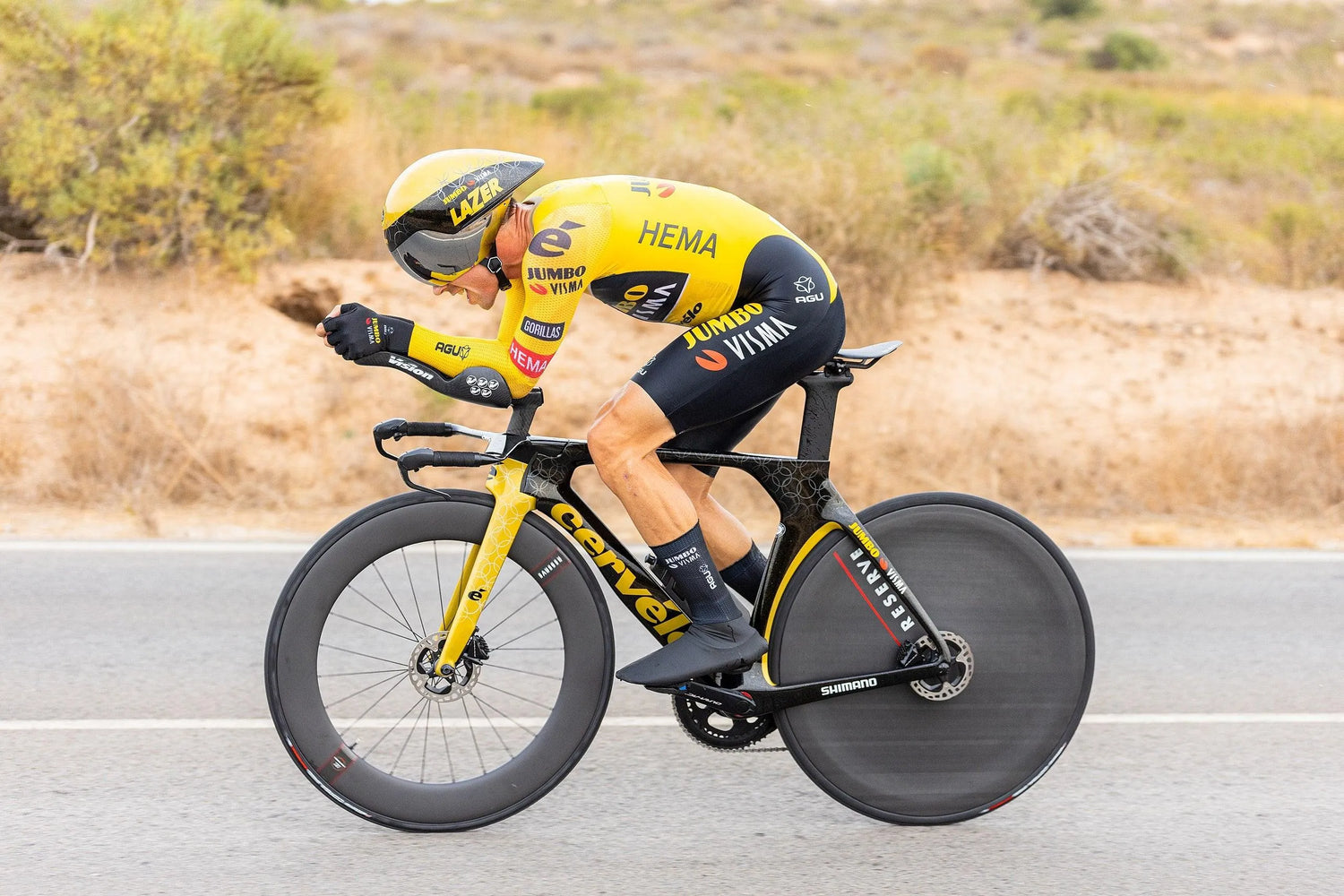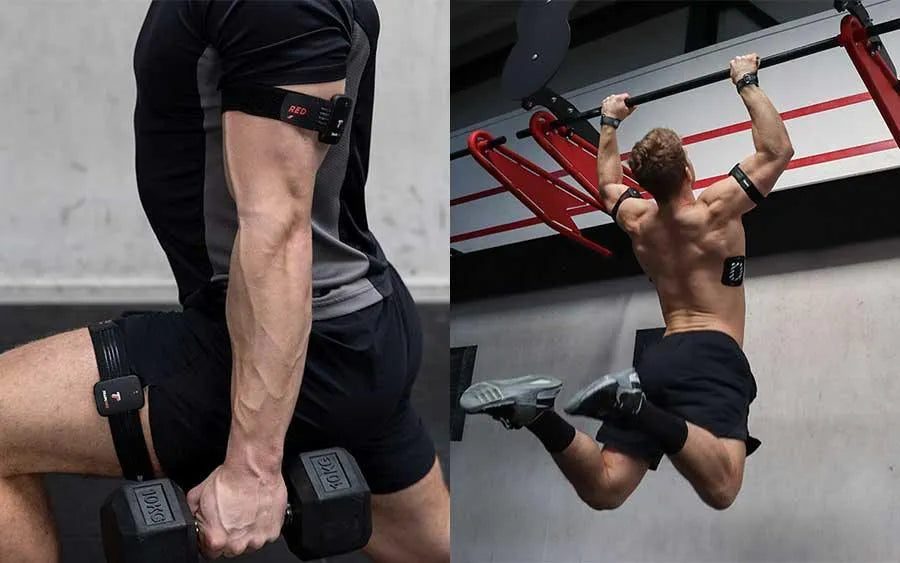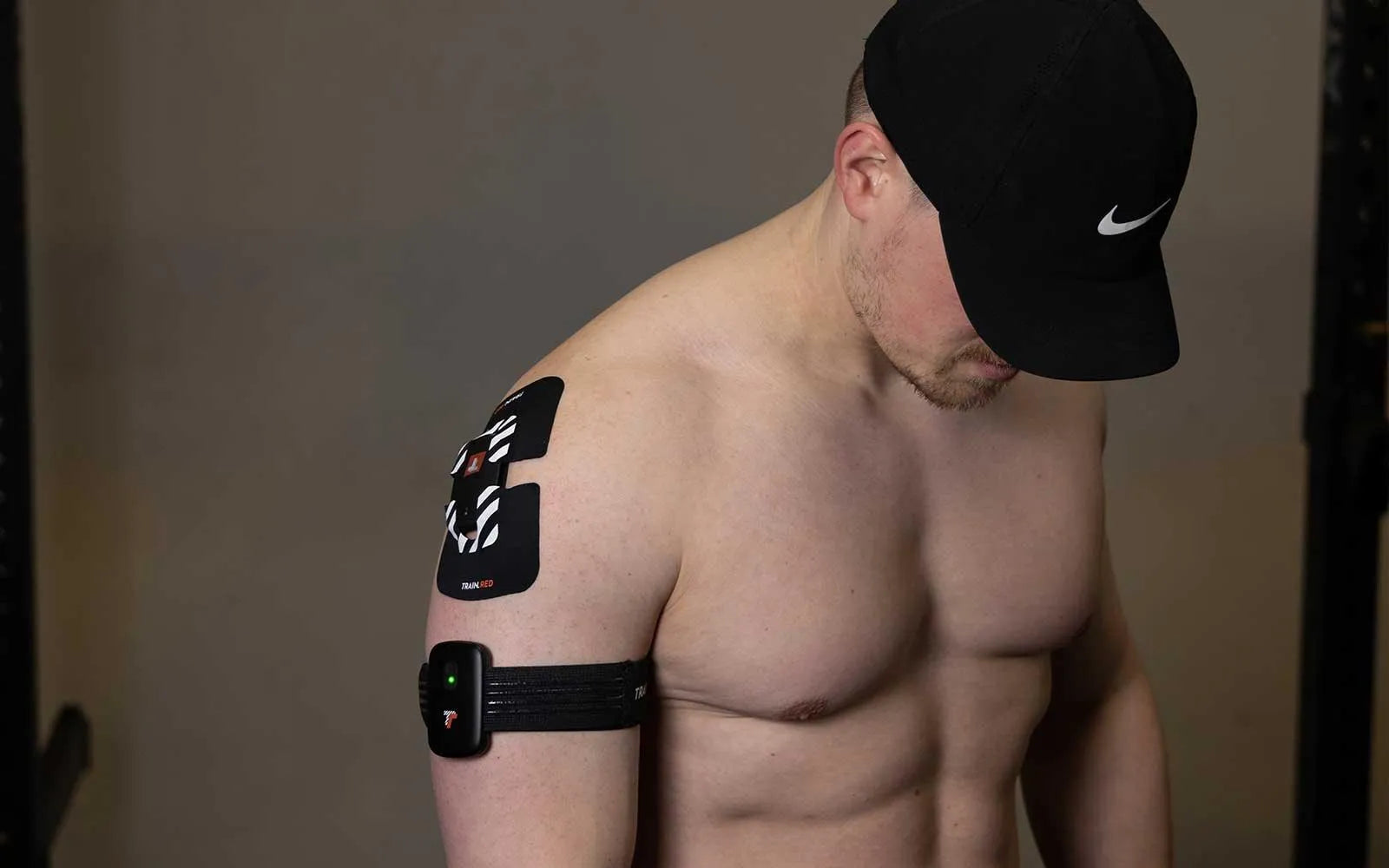‘Doctor, when cycling over 400 Watts, my legs hurt’. Most doctors would smile and tell you this is perfectly normal. For 1 out of every 5 professional cyclists, this pain is actually not normal and could mean the end of their career.
MD Goof Schep, Dr Martijn van Hooff and their research group dedicated years of research to this mysterious occupational injury. In this blog, we will explain the basics of this injury, and show the potential of muscle oxygenation as a tool for early detection and diagnosis.
Are sports healthy? During intense training or competition, it is not uncommon for athletes to experience pain, cramps, and fatigue. This is a perfectly normal response from your body begging you to stop, but for some athletes, there is more than meets the eye. Upper leg pain, cramps and fatigue can result from reduced blood flow to the legs through the iliac arteries. Overload damage as a result of millions of pedal strokes can lead to a medical condition known as the Flow Limitation of the Iliac Artery or “FLIA”. FLIA has a severe impact on endurance athletes and can cause insufficient blood transport to the lower extremities during strenuous exercise.
Anniemiek Van Vleuten, Amanda Spratt, Joe Dombrowski, and Tony Gallopin are just a few high-level athletes who have had to undergo surgery to return to competition after experiencing reduced performance due to this ailment. This condition is seen in sports such as cycling, triathlon, and skaters in which athletes put pressure on their legs and thus iliac arteries, in a bent-over, aerodynamic position. Early diagnosis of this condition can be difficult as symptoms only appear in advanced stages, and the cause can be multiple factors such as the athlete's position during activity, psoas muscle hypertrophy, arterial fixation, excessive vessel length, or even endothelial dysfunction.
In advanced cases, surgery may be the only solution to relieve symptoms and restore normal blood circulation. Surgery is always a risk, but especially the return to an elite level with this injury is very uncertain.
Research has shown that Train.Red sensors that use NIRS technology can detect problematic situations in an early stage. Early detection allows alternative targeted workouts to improve hip mobility and a change in cycling position reducing the pressure on the iliac artery, possibly preventing future problems.
HOW IS IT DIAGNOSED?
Thanks to the availability of more diagnostic methods, there has been an increase in awareness of clinical conditions that can impact athletes' performance. In the past, FLIA diagnosis relied on measuring the pressure difference between the upper and lower limbs, and ultrasound of the iliac arteries was only used if symptoms were present. These tests were limited and often done after symptoms emerged, making preventive interventions impossible.
Nowadays, NIRS sensors are used to detect potential issues during physical activity, training, or competitions. The new method focuses on measuring muscle oxygenation during an incremental test and its recovery phase to identify any differences between limbs and measure peak exercise performance.
Ankle-Brachial Index
To evaluate any problems with the arteries in athletes, an index called the Ankle-Brachial index is used. For this index, you measure the pressure difference between the upper and lower limbs in the supine position. The test was adapted to enhance the onset of symptoms and it is performed after a maximal incremental test, in which the athlete remains in the competitive position with the feet placed on a platform. The values are corrected for the height difference between the limbs.
Doppler Ultrasound Examination
To assess possible kinks and intravascular lesions, a Doppler ultrasound examination is conducted while the athlete is in the supine position with their hip extended and flexed, using a transverse and axial scan. Peak systolic velocity (PSV) is evaluated just after the bifurcation of the artery, both with the hip extended and flexed. In the second case, an evaluation with psoas muscle activation is also performed to identify any interference caused by this muscle.

(source)
NIRS Technology
The Train.Red sensors tackle several problems that are present with previous test methods. First and foremost, you can measure continuously during exercise. The sensors are easy to implement in regular test routines and are not influenced by the operator if placed systematically.
A typical assessment follows a classic incremental test protocol. The shown test is the protocol we find in Jem Arnold's article, the results can be transferred to assessments that are carried out in different ways. This specific test starts with a baseline at 100 W for 5 minutes and then increases the intensity by 1 W every 2 seconds until exhaustion. Immediately the subject places both feet on a stationary platform at the same height for a passive recovery of 5 minutes.
During the incremental test, a trend in muscle saturation similar to that described in the article on cycling evaluation tests can be seen. Especially when exercise gets hard, above 75% of your peak power during an incremental test, a different trend can be observed if FLIA is existing.
Note that the Train.Red sensors are not medically certified, you cannot draw any diagnostic conclusions from these results, but merely use them as reference or of course, for research purposes.
The typical FLIA difference is similar to an occlusion, where blood flow is obstructed and thus limited. This could of course also be due to an asymmetry in the force that is applied to the pedals. Therefore an alternative metric, the Power-Deoxygenation Factor can be visualized which makes the problem even more evident.
Power-Deoxygenation Factor = Power / [(1 - SmO2) x 100]
The authors suggest calculating the average 30-second values at 50%, 75%, 95% and 99% of the ramp test duration to check for the progressive imbalance between legs with increasing exercise intensity.

(Jem Arnold - Maastricht Symposium on IALF - 2023)
RECOVERY KINETICS
What if the occlusion of the iliac arteries is bilateral? At the end of the incremental test, placing the feet on a block in order to maintain the symmetrical position and maintain the competitive position, the muscle oxygen will increase with a monoexponential trend, until it reaches a new plateau. If there is any problem with the iliac arteries, re-oxygenation will take longer than in a healthy person. Once physical exhaustion has been reached, it is necessary to move to the recovery position in the shortest possible time in order to be able to analyze a curve as real as possible. Even if the expected trend is the one that can be interpolated with a mono-exponential curve, in the most severe cases of flow limitation, it is possible that the trend is completely different. In healthy and affected subjects it will be possible to interpolate this curve which is described with the following equation:
SmO2 (t) = SmO2 min + SmO2 Δrecovery × (1 - e - t⁄Tau)
where SmO2 (t) is the exponential fit data from NIRS-derived signal, SmO2 min is the minimum value of SmO2, SmO2 Δrecovery is the reoxygenation amplitude, and Tau is the time constant related to recovery. For analysis, kinetics are usually divided into 5-second intervals to reduce measurement noise.

The characteristic values that are significant for the diagnosis of the problem are:
- Time delay (Td): the time elapsed between the beginning of recovery and the beginning of monoexponential
- Mean Response Time (MRT): the sum of Td and Tau
- Half Value Time (HVT): the time for the signal to reach half the Δ recovery in the recovery period

(source)
The table above is derived from a study by van Hooff et al. (2022) and shows how even healthy legs in subjects afflicted by FLIA have slower kinetics. This can be an alarm bell for the development of pathology in the early stages. The normal ranges remain to be defined as more research will be needed to define the limits.
Conservative practices
Conservative practices vary significantly by athlete type. A drastic but simple solution would for example be to switch to a sport that does not require hip flexion. For a professional cyclist, this is not an option. Alternatives are changing the position of the saddle, raising the handlebars or bringing the saddle closer, which can be useful for minimizing hip flexion. The action of pulling upwards on the pedals should also be avoided, as it can cause psoas hypertrophy.
For a professional athlete, the most reasonable conservative practices consist in modifying the saddle position in a less aggressive way and in the use of stretching to reduce the tonicity of the psoas. By focusing on the strengthening of the glutes during the pushing phase, the demand for activation of the psoas in the upward pulling phase can be decreased. These may be the only viable steps to delay any worsening of the disorder and postpone the need for surgery. For this reason, detecting the athlete's predisposition to this problem very early makes it possible to adopt small sustainable measures, even for those who practice high-level sports. In addition, it is important to know that surgery is an invasive option that requires several months to return to sporting activity and can present complications. Even though most professional cyclists aim for this treatment, there is no guarantee of success.
IN SHORT
Flow Limitation of the Iliac Artery is a condition that leads to pain and underperformance, this should be avoided as much as possible. Now, thanks to NIRS technology, it is possible to monitor the situation in athletes who do not present any symptoms without performing specific instrumental tests. Early detection allows implementing conservative treatment methods for predisposed subjects to prevent the injury from appearing or in at least slow down its course. Research in this field needs further confirmation, but it is rapidly improving and we are happy to be able to give our contribution to improve the quality of sport for everyone.
During the Dutch show 'De Avondetappe' with Martijn van Hooff as a guest, we had the privilege of hearing the testimony of a rider (Laurens ten Dam) who personally faced flow limitation in the iliac artery. They shared their journey and emphasized the importance of timely detection of this condition to take preventive actions. Alongside the rider's testimony, they highlighted how NIRS technology enables early detection of flow limitation in the iliac artery, paving the way for preventive practices and more conscious management of cardiovascular health. Watch the episode here.
Are you interested in understanding NIRS technology more and want to know all the features of Train.Red sensors? Schedule a free meeting with our experts who will introduce you to the use of one of the latest technologies in the sports field.
Jem Arnold, an esteemed researcher in the field of Flow Limitation of Iliac Artery disorders, can be reached via email at jem.arnold@ubc.ca or through his Twitter profile.
BIBLIOGRAPHY
Arnold, J., Yogev, A., & Koehle, M. S. (2022). Evaluating Arterial Blood Flow Limitation Using Muscle Oxygenation and Cycling Power. https://doi.org/https://doi.org/10.3390/jcm11247462
Hooff, M. Van, Meijer, E. J., & Scheltinga, M. R. M. (2022). Test-retest reliability of skeletal muscle oxygenation measurement using near ‐ infrared spectroscopy during exercise in patients with sport ‐ related iliac artery flow limitation. December 2021, 114–126. https://doi.org/10.1111/cpf.12738
Peach, G., Schep, G., Palfreeman, R., Beard, J. D., Thompson, M. M., & Hinchliffe, R. J. (2012). Endofibrosis and kinking of the iliac arteries in athletes: A systematic review. In European Journal of Vascular and Endovascular Surgery (Vol. 43, Issue 2, pp. 208–217). Elsevier Ltd. https://doi.org/10.1016/j.ejvs.2011.11.019
van Hooff, M., Arnold, J., Meijer, E., Schreuder, P., Regis, M., Xu, L., Scheltinga, M., Savelberg, H., & Schep, G. (2022). Diagnosing Sport-Related Flow Limitations in the Iliac Arteries Using Near-Infrared Spectroscopy. Journal of Clinical Medicine, 11(24). https://doi.org/10.3390/jcm11247462
van Hooff, M., Schep, G., Bender, M., Scheltinga, M., & Savelberg, H. (2021). Sport-related femoral artery occlusion detected by near-infrared spectroscopy and pedal power measurements: a case report. Physician and Sportsmedicine, 49(2), 241–244. https://doi.org/10.1080/00913847.2020.1796182
van Hooff, M., Schep, G., Meijer, E., Bender, M., & Savelberg, H. (2018). Near-Infrared Spectroscopy Is Promising to Detect Iliac Artery Flow Limitations in Athletes: A Pilot Study. Journal of Sports Medicine, 2018, 1–11. https://doi.org/10.1155/2018/8965858





